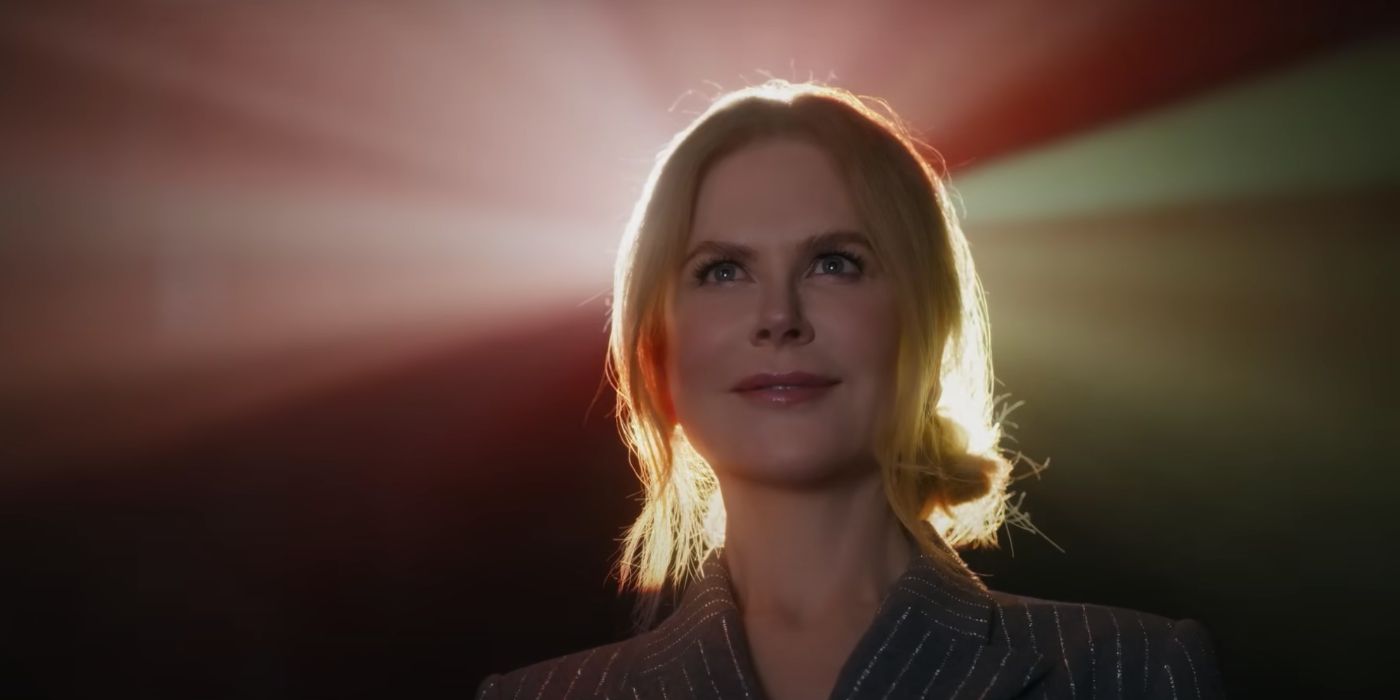Summary
- Alamo Drafthouse enters a new era after the Sony purchase, marking the end of an impressive independent stint where the Texas-based exhibitor made ripples in the industry for its unique, customer-first model.
- The sale of Alamo to Sony makes more sense from a broad investment perspective despite mass Alamo franchise closures a week earlier.
- The purchase marks an unclear future for the Alamo chain under Sony, with theaters meeting increasingly dire market forces, competing against streaming services, and a lack of consumer enthusiasm.
At the forefront of the new face of movie-going experiences, Alamo Drafthouse perfectly embodied the independent spirit that defined Austin, Texas, complete with fine dining and recliners. Expect it to be slightly less weird from now on. Sony Pictures Entertainment has purchased the upscale movie chain. The fantasy of the Alamo Drafthouse as disruptive rebels in the industry is effectively dead, and we’ll tell you why it was never destined to last.
Launched by Tim and Karrie League to cater to the whims of movie fans and offer a refined take on the stale theater model, Alamo Drafthouse’s boom coincided with the proliferation of the film industry during the 2010s. Alamo weathered the COVID disaster, but even with fervid fan loyalty, that cannot shield them from the greater market forces, most notably consumers fed up with high prices and a mediocre slate of recent blockbusters as the “Great Contraction” affects the entire industry. Numbers indicate expansion no longer makes sense as theaters are redundant.
Austin might pride itself for keeping it weird, but Sony will assume some degree of control going forward. Like an aging hippie cutting his hair and buying a Porsche, the sale was more predictable than initial reports would let on. The corporate acquisition was probably inevitable as Alamo Drafthouse franchises (and knock-offs) have popped up across the United States since its inception in 1997. The shocking part isn’t that it was bought out, but who and when. Someone should have bought them out much sooner. The reason for the Alamo Drafthouse deal is probably not for the reason you think, and don’t wait for a Sony press release to explain either. On that note, don’t trust Sony in general.
The Irresistible Appeal of Alamo Drafthouse (Beer and Leg Room)
Alamo came to define an adult-oriented theater. Its reputation was bigger than its corporate footprint. As of writing, Alamo’s website boasts an infinitesimal 40 theaters across 12 US states, totaling over 300 screens. For the record, this pales in comparison to the big boys on the block like Regal, which maintains a whopping 5,774 screens in 10 times as many theaters across 41 US states and territories.
It wasn’t quantity that made Alamo a fan favorite, but rather the personality of the establishment. Alamo’s CEO told CNBC‘s Sarah Whitten in 2023 that they hold their facilities to a higher standard than other operators. “If they don’t have recliners, we’re going in and we’re upgrading. We’re giving face-lifts where needed and just really refreshing and making sure that we continue to deliver that premium experience which people grow to love and expect from Alamo.” The business famously allowed plenty of noise, but yakking on smartphones was strictly prohibited. By all means, enjoy your T-bone steak, but remember to keep your trap shut, or you’ll get tossed out on your butt. If the movie was a dud, just sleep through it on your comfy chair.
The chain was heralded for pioneering the use of digital tickets. In the last few years, it also pushed its “Big Show” (utilizing Dolby Atmos) as a direct response to competitor IMAX, and at the same time, IMAX became the exhibitors’ biggest moneymaker. Still, Alamo managed to maintain steady traffic. Does it make sense for Sony to buy a theater chain while theaters fade into obscurity and as films flop left and right? No, but if you unpeel the layers of this transaction, you can observe that it has more to do with Sony’s weakness than Alamo’s strength and even less with movies.
Alamo Drafthouse Was Ultimately No Exception to the Rule
During the controversy associated with the movie The Interview a decade ago, Alamo made the choice to screen the James Franco comedy despite reported cyber threats from the North Korean government. That independent status is no longer in effect, meaning that such a move today is unthinkable, Alamo now under the umbrella of an international entertainment behemoth.

Related
A Shocking Number of Adults Prefer Streaming Over Watching Films in Theaters
A new poll reveals that an overwhelming number of adults located in the United States choose streaming films over going to cinemas.
In a statement in Variety, the co-founder Tim League put a friendly spin on the whole deal, praising Sony for understanding the ethos and identity of Alamo, and stated they were determined to maintain the same level of dedication to customer service that made Alamo so legendary among movie fans:
“We are beyond thrilled to join forces with Sony Pictures Entertainment to expand our company vision to be the best damn cinema that has ever, or will ever, exist now in ways we could only ever dream of […] They have a deep respect and understanding of cinema’s ability to both drive growth and create lasting cultural impact which aligns perfectly with everything Alamo Drafthouse stands for.”
Wonderful, Tim. We all totally believe you. Never mind Sony’s litany of recent anti-consumer practices, PR catastrophes across multiple media platforms, and habit of leaking sensitive data. Clearly, Sony is a company that cares about doing the right thing. If you’re looking for some immediate obvious answer to why this all unfolded at this very time, look no further than Alamo’s home market – the state of Texas – for elucidation. As covered in the Austin outlet KUT six days before the Sony announcement, five Alamo theaters were closed in Texas, and another in Minnesota also announced termination of services. The operator of those theaters filed for bankruptcy protection, as the inflation crisis claimed a chunk of Alamo’s home turf.
What Does This Mean for the Average Movie Fan?
Sony would be unwise to meddle with a good thing, so don’t expect the branding or buffalo wings to change. Likewise, the associated film festivals and theaters will remain completely unaffected… for now. That sounds good, but nothing is stopping Sony from doing the same thing with their newly-acquired theater that they have done with their other assets, closing down the London-based Playstation Studios this year at the cost of 900 employees. However, it should be noted that theaters run on the principle of franchise agreements. The specifics of new contracts going forward remain unclear as the Alamo chain trades hands into a very different type of ownership with different priorities and sensibilities.

Related
The Best Movies to Watch in Theaters This Summer
Here is an extensive breakdown of every big movie being released for the summer 2024 movie season in theaters.
Optimism can be found amid the gloom, AMC boss Adam Aron telling The Wrap in early April (a month before the worst Memorial Day box office in 29 years), “Our industry can see recovery just over the horizon. The box office in 2025 and 2026 is going to be roaring hot compared to 2023 and 2024.” We’ll believe it when we see it. Maybe Aron knows something we don’t. However, a better explanation isn’t Sony being bullish on the revival of theaters but their existential dread gazing at their portfolio.
Theaters provide an opportunity to diversify their collection of properties, badly needed after their stock dropped $20 billion in 2022 following the acquisition of Activision/Blizzard by their arch-rival Microsoft, their gaming division consistently losing money for years. Throw in another $10 billion loss two months ago following a kneejerk $3 billion purchase of game developer Bungie, and you can see why Sony is freaking out about shareholders dumping them as their stock battles a noticeable devaluation since Dec. 2021.
The Wild West days of independent theater may not be over, but with streaming eating theaters’ lunches, it’s a hollow facade of what it was in 2014. What is the Alamo Drafthouse’s final legacy? It will likely be remembered bittersweetly in Texas by the hardcore first adopters, but outside the Lone Star State, it will go down as just another corporate entity as theaters race to build the biggest, most immersive “premium experience” with the best chicken wings and IPAs.



